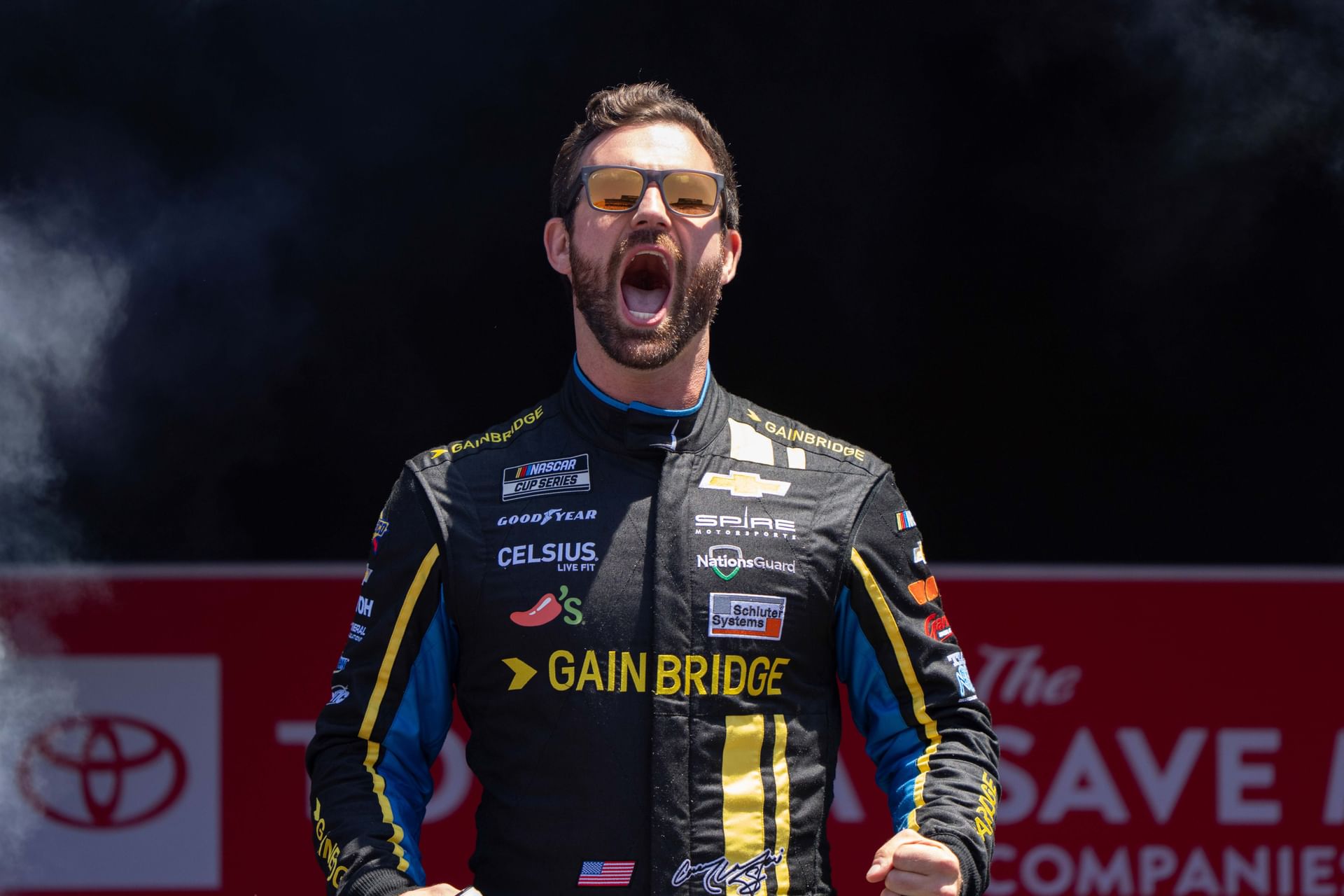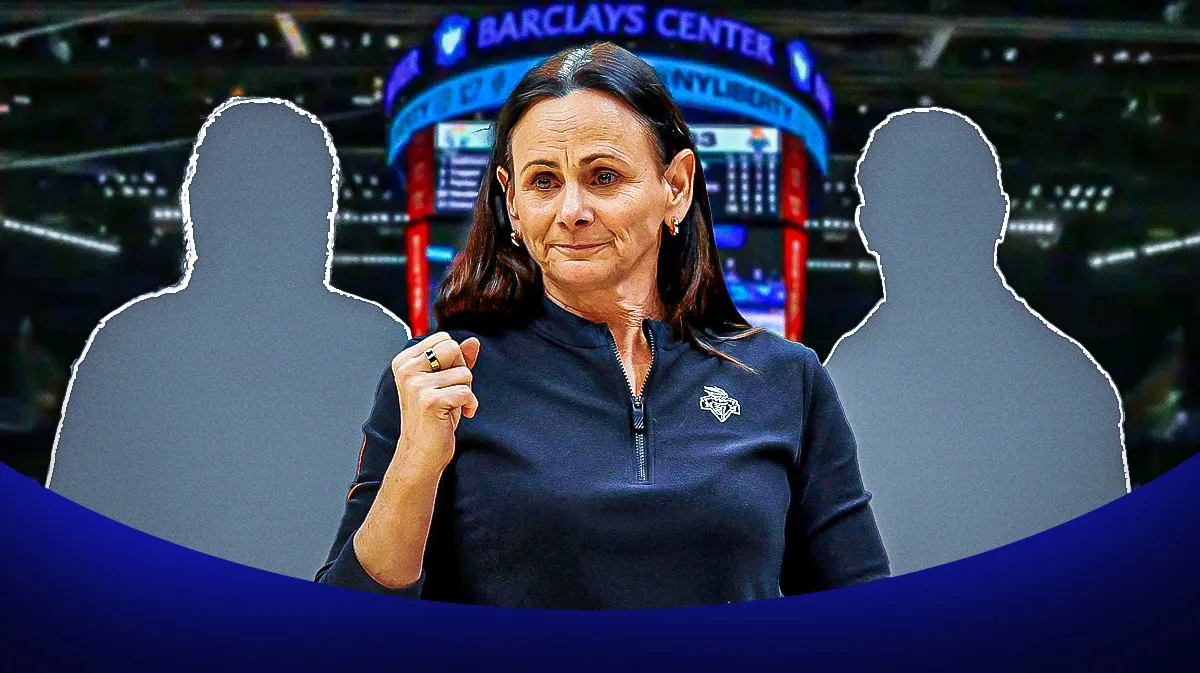By Anurup Chakraborty
Copyright sportskeeda

The NASCAR Cup Series playoff stretch has been defined by worrying television numbers, and Truck Series driver Corey LaJoie is tired of the online discourse it has brought. In New Hampshire, Ryan Blaney’s victory in the Mobil 1 301 came in front of just 1.29 million viewers, which was the lowest of the season and the fourth straight playoff race to fail to clear two million.For the first time in the sport’s history, an entire postseason run has fallen under a mark once taken for granted. NASCAR fans have taken to social media to debate the reasons. Some point to the playoff format, while others blame the Next Gen car. In recent weeks, discussions have only grown louder as audiences shrink during football season and Formula One continues to make inroads with U.S. fans.The debate has been constant, as one fan posted an image of a futuristic cityscape, writing:”NASCAR Twitter when people finally realize that ratings are affected by a multitude of factors in an everchanging world and that there is no one-trick solution to making everything better over night.”Corey LaJoie didn’t hesitate to respond and added:”The moment of realization will never remotely come close to happening.”Corey LaJoie @CoreyLaJoieLINK@_DanielCespedes The moment of realization will never remotely come close to happening.Corey LaJoie’s blunt assessment struck at the core of the conversation. NASCAR is no longer attracting the kind of audience it used to for a multitude of reasons.Formula One’s growth in America has changed how young viewers follow motorsport. NASCAR’s fall races now sit head-to-head with the NFL, which continues to post record-breaking viewership. And while the Next Gen car has leveled competition, it hasn’t provided the hook needed to stop audiences from drifting away.Those realities have shown up in the data. Gateway drew 1.53 million, Bristol 1.54 million, and Loudon only 1.29 million. All playoff events are struggling for traction. By comparison, the Azerbaijan Grand Prix pulled 1.1 million viewers at 7 a.m. ET, shrinking NASCAR’s lead over F1 to just 190,000. That kind of shift would have been unimaginable a decade ago, and it has turned Corey LaJoie’s words into a sobering truth. No single change will restore old numbers.”There isn’t budget left”: Corey LaJoie questions NASCAR’s media deals amid viewership dipCarl Edwards (L) and Corey LaJoie on the NASCAR on Amazon Prime Video set at Charlotte. Source: GettyWhile TV has stumbled, NASCAR has pointed to its first Amazon Prime broadcasts as proof of growth. The $7.7 billion media deal that runs from 2025 to 2031 began this year with the Coca-Cola 600 at Charlotte. Across five races, Prime delivered an average of 2.1 million viewers, nearly matching cable. NASCAR also claimed big youth gains, with 233,000 viewers between 18 and 34, a 36% jump year-over-year (as per Blackbook).That digital reach led Danielle Trotta, who is a NASCAR presenter for Prime alongside Corey LaJoie, to argue that streaming is the sport’s future. But even those numbers have gaps. Only four of the five races had full demographic data.The wider problem, as NASCAR insider Eric Estepp explained, is that the challenges are structural. LaJoie agreed with Estepp’s points but pointed to the sport’s media presence:”Great points. I’ve also wondered that since the new media rights deal squeezes every penny out of the broadcast partners, there isn’t budget left to build out daily shows to keep buzz and momentum going from week to week (ie Racehub, RPM 2nite, WindTunnel) whereas other sports have multiple great daily talk shows and create a buzz leading into the weekend.”Corey LaJoie @CoreyLaJoieLINK@EricEstepp17 Great points. I’ve also wondered that since the new media rights deal squeezes every penny out of the broadcast partners, there isn’t budget left to build out daily shows to keep buzz and momentum going from week to week (ie Racehub, RPM 2nite, WindTunnel) whereas other sportsOther sports thrive on daily talk shows and constant conversation. NASCAR’s calendar delivers 36 weeks of racing, but without consistent storytelling between Sundays, the buzz dies quickly. Corey LaJoie believes that gap leaves NASCAR at a disadvantage compared to leagues that dominate social feeds and sports talk every day of the week.As the NASCAR Cup Series playoffs wind toward Phoenix, the discourse surrounding ratings and relevance shows no signs of slowing.



